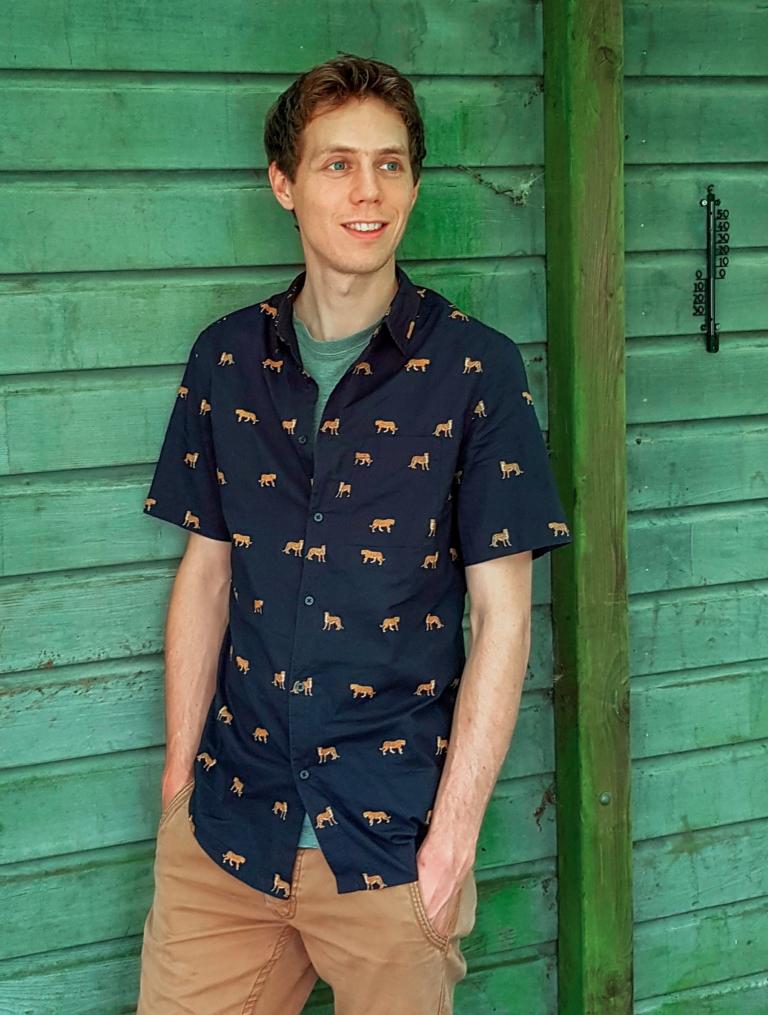
On 30 June 2022 at 10.00 AM Michiel Hooykaas will defend his PhD thesis at Leiden University in true style. Under his suit, he will be wearing a shirt with a bird print that alludes to his field of research and the term that he coined himself: species literacy.
Crow and jackdaw
How come some people can easily name butterflies, plants, and birds in the neighborhood, when others do not even know the difference between a crow and a jackdaw? As a biology student, Michiel noticed that there are huge differences in people’s knowledge of the natural world. ‘I wondered which kinds of species people do and do not know, why this is the case, and what the consequences of this could be.’ Over the past four years, Hooykaas delved into these questions, and now he is defending his thesis on the image and cultural portrayal of animals.
Species as a bridge to biodiversity
Species, especially animals, were part of Michiel’s life from an early age. ‘My parents pointed out the different species in the garden and when we were on holiday, and I liked taking my fishing net to streams and ditches to discover things. So even when I was young, I was already developing an awareness of the pressure many species are under.’ The decrease in biodiversity is continuing unabated, and public support is needed to stop this decline. It’s hard to care about what you do not know, so people need to have some awareness of biodiversity. ‘Species are a bridge to learning about biodiversity. I therefore coined the term “species literacy” and decided to investigate the level of knowledge present in the Netherlands.’
During his PhD research at the Department of Science Communication & Society at Leiden University, Michiel studied the species literacy of different target groups in the Netherlands, including elementary school students. He tested the level of knowledge using an animal quiz, which largely consisted of identification tests. ‘The outcomes were alarming; everybody knows what a polar bear is, but most children did not know what animals live in their own neighborhood, such as common garden birds and butterflies: the house sparrow was a “bird” and the red admiral a “butterfly”. If you communicate about red admirals, part of the public won’t have a clue what you’re talking about.’
Picture books and children’s clothes
Besides knowledge levels, Michiel also investigated the representation of animals in picture books and on children’s clothing. ‘Children may come across animals in nature but also in culture. Many products portray animals, and now that experiences in nature are becoming scarcer, their influence on our idea of biodiversity will be relatively large.’ In his study of children’s clothes and picture books, Michiel encountered many animals, but mainly mammals and exotic animals. The diversity and specificity turned out to be low. ‘The picture of biodiversity portrayed was superficial and skewed, which reflected the outcomes of my research into knowledge levels.'
Inspiring
Finally, Michiel studied the perspective of communicators by interviewing the people who communicate about biodiversity. ‘Their story reinforced my idea that even in a highly urbanized country like the Netherlands, people must have opportunities to learn about biodiversity. That can be realized through various avenues: greening outdoor environments, education, culture, and communication.’
With his findings, Michiel hopes to introduce people to the wealth of life that can also be found in the Netherlands. ‘My research could be an eye-opener for nature conservationists, communicators, and designers, whom I hope to inspire. I would advise them not to lean too much on terms like “biodiversity” and “nature”. Instead, name, write, and draw species, including those that live in people’s own neighborhoods. Species give a face to biodiversity and can contribute to a rich relationship between people and nature.’
Moreinformation
Since 2022, Michiel Hooykaas has worked as a researcher in Biodiversity & Society and as education coordinator at Naturalis Biodiversity Center. His PhD defense can be followed online via the following link: www.universiteitleiden.nl/wetenschappers/livestream-promotie